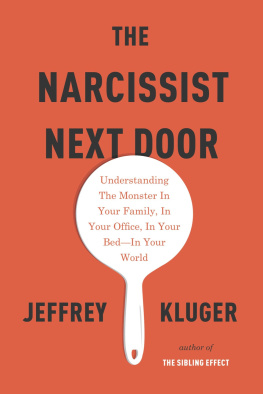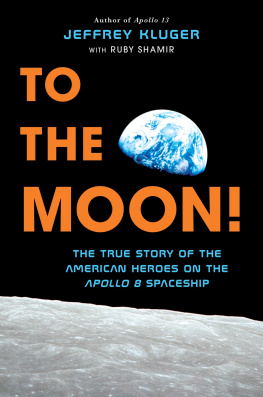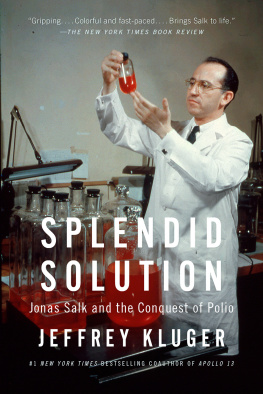Contents
Why is the stock market so hard to predict?
Confused by Everyone Else
Why is it so hard to leave a burning building or an endangered city?
Confused by Instincts
How does a single bullet start a world war?
Confused by Social Structure
Why do the jobs that require the greatest skills often pay the least? Why do companies with the least to sell often earn the most?
Confused by Payoffs
Why do people, mice, and worlds die when they do?
Confused by Scale
Why do bad teams win so many games and good teams lose so many?
Confused by Objective
Why do we always worry about the wrong things?
Confused by Fear
Why is a baby the best linguist in any room?
Confused by Silence
Why are your cell phone and camera so absurdly complicated?
Confused by Flexibility
Why are only 10 percent of the worlds medical resources used to treat 90 percent of its ills?
Confused by False Targets
Why does complexity science fall flat in the arts?
Confused by Loveliness
London 1854
TO ANYONE PAYING ATTENTION ON the morning of August 29, the death of the little girl at 40 Broad Street did not seem like a terribly remarkable thing. Not many people in the London neighborhood where the girl had lived even knew her namesmall children being something of an overstocked commodity in so overrun a place as Broad Street. Indeed, its entirely possible no one outside the childs immediate family would have learned of her passing at all had it not been for the way she died: the violent intestinal spilling that was the unmistakable signature of cholera. Let the cholera bug alight even briefly and a single baby at a single address was not the only one who would die.
Cholera, the neighbors knew, would spread quickly, but it would also spread unpredictably. Unlike influenzawhich could travel by air, seeming to bring down whole blocks in a single infectious sweepcholera was choosy. It would tap some members of a household and spare others, strike one home on a block and leap over the next. The disease would sweep wideof that there was no doubtbut in what direction and with what rhythm was impossible to predict.
The Broad Street case broke free just as fast as people feared it would. By the very next day, dozens of Londoners in the seventy-block area surrounding the girls address had seized up with the illness. The following day, the plague claimed 100 more people, all in the same febrile quarter. The day after that 141 more victims were strucknearly all of whom either quickly died or seemed certain to do so. An unusually ferocious case of cholera was clearly on the loose, and though for now it seemed content to busy itself with the people in a single working-class ward, it would not be contained there for long. If it was going to be controlled, it would have to be stopped at its source. John Snow, a forty-one-year-old physician who lived near the blighted quarter, thought he might know how.
Snow was already well acquainted with cholera. Five years earlier, a similar, if smaller, outbreak had struck near the London wharves, and he had been called in to treat the young sailor in the Bermondsey neighborhood who had been the first to fall ill. Snow was too late to save the man, and indeed was unable to save the next occupant of the sailors modest rooming house quarters as well. This second man had moved in after the stricken man had died and soon grew sick himself. Snow examined what the men had in common. They had breathed the same air in the same small house, but so had the other residents and they had remained well. They had never shared a meal, nor was there any suggestion that theyd even dined in the same restaurant or public house. Theyd used the same bed at different times, and it was always possible that the first man left behind a trace of disease that the second man had acquired, though subsequent residents of the room had remained healthy. Then too it was always possible that the two dead men had drunk the same water.
London neighborhoods had for some time been well plumbed, outfitted with public pumps that provided unlimited supplies of water for washing, cooking, and drinking. The Bermondsey neighborhood where the sailor had died was no exception, nor was the seventy-block area where the Broad Street cholera was now raging. The entire quarter had no fewer than seven pumps, as well as two more just outside its borders.
As was the custom in London, people grew picky about the pumps they used, not always preferring the one closest to their homes, but the one that produced water whose taste was most to their liking. One member of a household might simply step to the corner to draw a dipper of water, while another might walk several blocks away. If there was any disease teeming in the waters that fed one pump and not another, it would be the people drinking from the fouled one who would get sick first. And the London plumbing had plenty of reason to grow foul.
As many pumps as there were in all the London neighborhoods, there were far more cesspoolstwo hundred thousand of them by the middle of the nineteenth century. There was a time when the pools were kept surprisingly clean, their contents regularly drawn out as a handy source of fertilizer for the farms still located in and around the city. The money that the sewage sales brought in was used to maintain the brickwork that lined and sealed the pools. Over time, however, the farms migrated farther and farther from the city and the farmers purchased their fertilizer deeper and deeper in the country. With no one regularly draining the city cesspools and no funds to maintain the immersed brickwork, the masonry seals began to fail and the contents of the pools began to seep into the nearby water supply. Snow suspected that, somewhere in the sickly seventy-block quarter, there was a diseased pool fouling a pump. Shut down that pump and you might stop the contagion.
On September 2, four days after the epidemic began, Snow took to the streets. As dozens more people continued to fall ill every few hours, he began calling on the houses of those already dead and those freshly stricken to find out how many people lived in each home and which ones had drunk their water from which neighborhood pumps. The mother who lost her daughter at 40 Broad Street usually used the closest pump, which was just outside her door and only three feet from a neighborhood sewage pool. She didnt regularly drink the water that flowed from it, but she did use it to rinse and soak her daughters diapers. Other people who lived near her also frequented the Broad Street pump, but still others preferred the ones at Bridle or Warwick or Rupert Streets. Snow inked all the names and addresses of all of the people he interviewed into a ledger and then drew up a map, with spidery lines connecting the houses of the well and the stricken to the site of the pumps that provided their water. In home after home, he noticed that while the odd victim or two couldnt remember where theyd drawn their water, almost every one of the other people felled by the disease had made it a point to seek out Broad Street water.
Over the week, as the death toll crossed four hundred and then five hundred, Snow continued his canvassing, ranging farther and farther from Broad Street, out to the cobbly alleys and avenues where the disease was its weakest. He stopped in at a neighborhood jail where five hundred inmates were kept in frightful conditions, yet only five had contracted choleradue, perhaps, to the fact that the building had its own well. He stopped in at a nearby brewery, where workers were given a generous ration of fresh beer each day, sparing them the need to sip much from any of the pumps. No one there had gotten ill.











